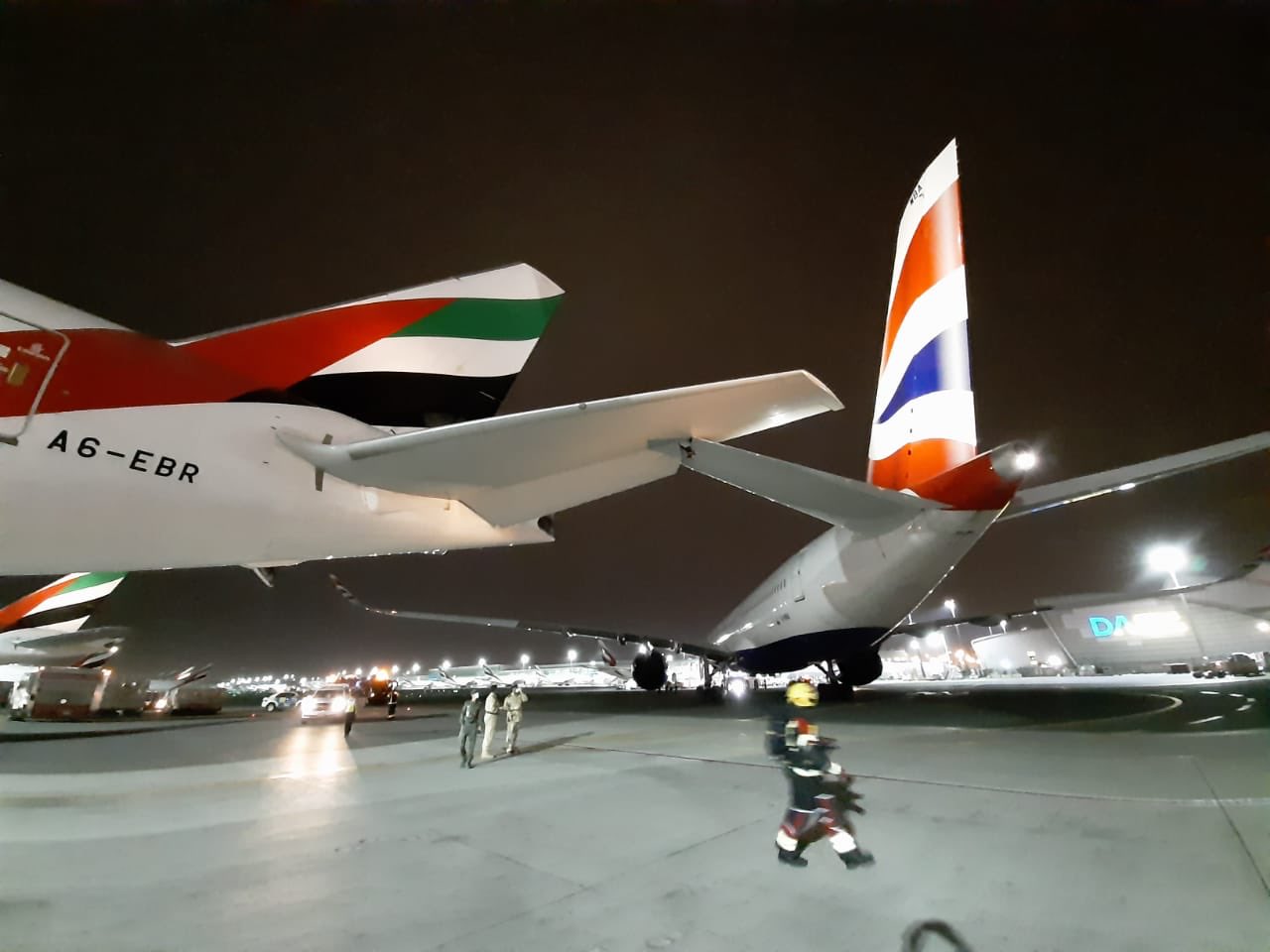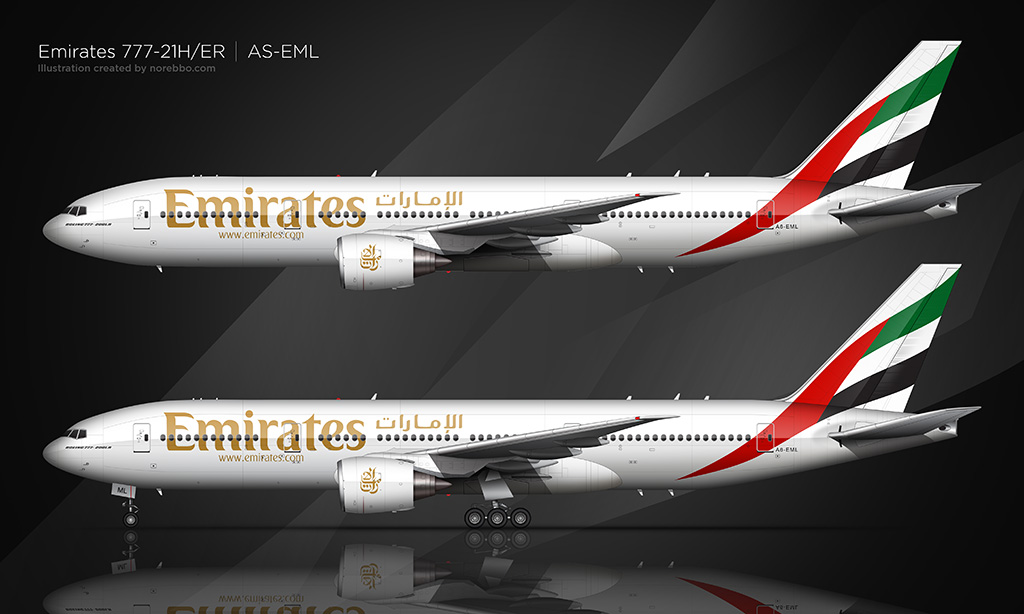B777 Emirates
- Emirates B777 Ek238
- B777 Emirates Seating Plan
- B777 Emirates Business
- B777 Emirates Fsx
- Boeing 777 300er Emirates
Emirates operates three versions of Boeing 777-300.
First cabin version of the Boeing 777-300ER (77W) Three class. V1
Jan 31, 2021 The Boeing 777-300ER has been the workhorse of the Emirates fleet for well over a decade, alongside the Airbus A380. The Emirates Boeing 777-300ER has a range of 7,888 nautical miles, and the aircraft type has flown over 298 million passengers since its introduction. Emirates Boeing 777-300ER first class. Photo: Arran Rice – Simple Flying. The 777X is Boeing's newest family of twin-aisle airplanes that builds on the passenger-preferred and market-leading 777 and 787 families. The Boeing 777X will deliver unmatched performance, exceptional profitability and industry leading reliability. The family includes the 777-8X and the 777-9X - both designed to respond to market needs and customer preferences. The Emirates Boeing 777 Emirates operates the world’s largest fleet of Boeing 777 aircraft. We fly these modern aircraft to nearly 100 cities on six continents, carrying millions of passengers across the globe each year 119. Emirates B777-300/ER NEW BUSINESS and ECONOMY CLASS Complete Review.After my spectacular New First Class ride on Emirates to Brussels, I flew back in their N.
First version of Boeing 777-300 operated by Emirates offers 354 seats in three classes: first, business and economy.
First class consists of 2 rows of closed suites per 4 in each. These suites have electrical sliding doors, mini bars, dressing tables, wardrobes and passengers of these suites may adjust the light as they want to. Also these seats are converted into flat bed seats with a mattress. For passengers with infants the seats 2E and 2F offer bassinets.
42 angle-flat seats are located in two section of business class. First section contains 2 rows of seats that have 2-3-2 configuration. Passengers traveling with babies are often seated on the seats 6DEF as they have bassinet locations.
Noise from the galleys and lavatories will cause inconvenience to passengers of the seats of the 7th row. Also, the seats 7A and 7K have misaligned windows.
Behind the exit row the other 4 rows of business class seats are located. Other passengers tend to gather in the area of the seats of the 8th row while waiting to use lavatories and causing discomfort to passengers of these seats. The seats 8DEF have bassinets.
The only disadvantage of the seats of the 11th row is close location of more crowded economy class.
Economy class may accommodate 304 passengers in three classes. First section has 5 rows of seats that have 3-4-3 configuration. As the tray tables of the seats of the 17th row are located in the armrests the width of these seats is reduced. Also these sets have no floor storage during take-off and landing. Passengers with babies are often seated here as these seats have bassinet locations.
The main disadvantages of the seats of the 21st row is limited recline and close location of the lavatories.
The second section of economy class seats contains 14 rows of seats. Passengers of the seats 23DEFG will feel comfortable thanks to extra legroom. These seats are first reserved for passengers with infants. Among disadvantages of these seats: proximity of the lavatories, lack of floor storage during take-off and landing and reduced width as the armrests of these sears are immovable.
The best seats in this section are the seats 24ABC and 24HJK. These seats offer extra space for passengers’ legs. However, as the tray tables are built-in the armrests these seats are narrower than standard. Lack of floor storage during take-off and landing is another disadvantage of these seats.
Proximity of the galleys and lavatories may represent a problem to passengers of the seats of the 36th row.
The third section of economy class seats has 14 rows of seats. Passengers of the seats 37ABC and 37HJK will take advantage of extra legroom. But close location of the lavatories, reduced width and lack of floor storage during take-off and landing may cause discomfort.
Emirates B777 Ek238
For passengers with babies the seats 38DEFG offer bassinet locations. These seats have extra legroom but are narrower than standard and have no floor storage during take-off and landing.
As the tray tables are in the armrests the width of the seats 46AB and 46JK is reduced a little.
Limited recline and close location of the galleys and lavatories make the seats 49AB, 49DEFG and 55JK bas seats.
Second cabin version of the Boeing 777-300ER (77W) Three class. V2

This three class version of Boeing 777-300 may transport 360 passengers.
First class consists of 8 closed suites. All these suites are standard. For passengers with babies the seats 2E and 2F offer bassinets.
Business class has 42 angle flat seats located in 6 rows per 7 in each. The seats of the 6th row have bassinet locations. Close location of the galleys is the only disadvantage of the seats 7B, 7D, 7F and 7J.
Passengers with babies also are often seated on the seats of the 8th row. The noise from the galley and lavatories may cause discomfort to passengers of the seats 8B, 8DEF and 8J.
Economy class may accommodate 310 passengers. Most of the seats in economy class have 3-4-3 configuration. Economy class seats are located in three sections.

First section includes 5 rows of seats. As the tray tables are built-in the armrests the width of the seats of the 17th row is slightly reduced. Also these seats have no floor storage during take-off and landing. For passengers with infants these seats offer bassinets.

Proximity of the lavatories and limited recline are the disadvantages of the seats of the 21st row.
The second section of economy class has 134 seats. Passengers of the seats 23DEFG, 24ABC and 24HJKJ will feel comfortable thanks to extra legroom. Among disadvantages: reduced width of the seats, lack of floor storage during take-off and landing and close location of the lavatories. Also these seats offer bassinet locations for passengers with babies.
The seats of the 36th row are less reclining than standard. Proximity of the galleys and lavatories is another disadvantage.
B777 Emirates Seating Plan
Behind another exit row the third section of economy class seats is located. Passengers of the seats 37ABC and 37HJK will take advantage of extra space for their legs. The noise from the galleys may be bothersome. The tray tables are built-in the armrests making them immovable and that is why these seats are narrower than standard. Lack of floor storage during take-off and landing is another disadvantage of these seats.
Passengers traveling with babies are often seated on the seats 38DEFG. Also these seats have limited space for passengers legs, have no floor storage during take-off and landing and have reduced width as the tray tables are in the armrests.
As there are no seats behind other passengers and crew members passing by tend to bump into the seats 45C and 45H.
For passengers traveling with a partner will be ideal AB and JK seats of the rows 46-49. The floor anchors from the seats located in front may interfere legroom of the seats 46AB and 46JK.
The seats of the 50th row are considered bad seats as they are less reclining than standard and are located close to the galleys and lavatories.
Third cabin version of the Boeing 777-300ER (77W) Two class
Two class version of Boeing 777-300 is the most common in Emirates’ fleet.
This airplane may transport 427 passengers: 42 in business class and 385 in economy.
First six rows represent the seats of business class. All these seats have 2-3-2 configuration. For passengers with infants the seats of the 1st row are equipped with bassinets. The main disadvantage of these seats is close location of the galleys and lavatories.
The 6th row of the business class seats is located behind the exit row. These seats also offer bassinet locations and have the same disadvantage as the seats of the 1st row, i.e. proximity of the galley and lavatories.
Behind the business class 3 sections of economy class seats are located. Most of them have 3-4-3 configuration.
B777 Emirates Business
First section consists of 13 rows of seats. Passengers of the seats 8ABC and 8HJK will feel comfortable thanks to extra legroom. However, as the tray tables are in the armrests, the width of these seats is slightly reduced. These seats have no floor storage during take-off and landing. The noise from the galley and lavatories may cause discomfort. For passengers with infants these seats have bassinet locations as well as the seats 9DEFG. The disadvantages of the seats 9DEFG are the same as of the seats of the 8th row.
The seats 15A and 15K have no windows.
B777 Emirates Fsx
Limited recline and close location of the lavatories are the disadvantages of the seats 21ABC, 21HJK and 22DEFG.
Behind the exit row the second section of economy class seats is located. This section has 14 rows.

Passengers traveling with infants are often seated on the seats 23DEFG. Passengers of these seats will take advantage of extra space for their legs. Among disadvantages of these seats: lack of floor storage during take-off and landing, reduced width as the tray tables are built-in the armrests making them immovable. Other passengers tend to gather in the area of these seats while waiting to use lavatories and causing discomfort to passengers of these seats.
The best seats in this section are considered the seats 23ABC and 23HJK. These seats may have extra space for passengers’ legs. But it can get cold by the exits during the flight. Also these seats are narrower than standard and have no floor storage during take-off and landing.
The seats 35ABC and 35HJK are less reclining than standard, the noise from lavatories may also represent a problem.
The third section of economy class seats is located behind another exit row. Due to the exit row located in front passengers of the seats of the 37th row will have extra legroom. Other passengers tend to congregate in the area of these seats while waiting to use lavatories. These seats are narrower than standard as the armrests of these seats are immovable. Lack of floor storage during take-off and landing is another disadvantage of these seats. Passengers traveling with babies are often seated on the seats 37DEFG as they offer bassinets.
As there are no seats behind the seats 45C and 45J are often bumped by other passengers and crew members passing by.
For passengers traveling with a partner will be ideal the seats AB and JK of the rows 46-50. These seats offer extra under seat storage as they are higher of the ground than other standard seats. But this may cause discomfort to passengers whose legs cannot touch the ground, moreover during long flights. Also it is difficult to sleep on these seats as they have no wall to lean against.
Limited recline make the seats 48AB bad seats.
Boeing 777 300er Emirates
Proximity of the lavatories will cause discomfort to passengers of the seats 48D and 48G.
The seats 49DEFG and 50 JK are considered bad seats because they are less reclining than standard and are located close to the lavatories.